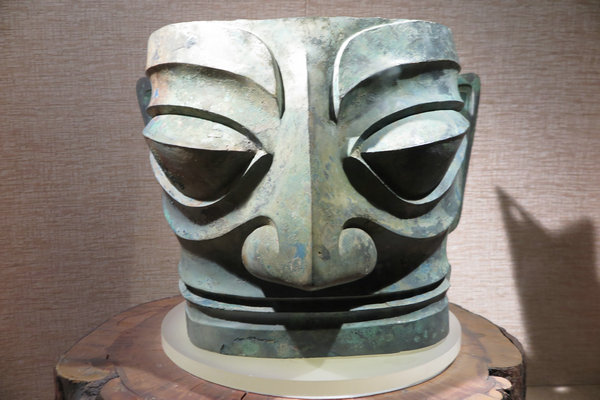

From the Sanxingdui Museum, visitors have to travel about 2.8 km west to reach the entrance of the Sanxingdui Ruins where they can see what is left of the mounds, the remnants of the city walls and the two sacrificial pits unearthed in 1986.
Most of the key exhibits in the museum come from the two pits, says Chen.
Many of the exhibits in the Sanxingdui Museum look like those in the Jinsha Site Museum although those in the former are much larger.
It is assumed that creators of the Sanxingdui culture moved to Chengdu and created relics on display in the Jinsha Site Museum after a disaster like a flood in the Yazi River befell Sanxingdui, says Zhu Zhangyi, archaeologist and deputy curator of the Jinsha Site Museum.
On Feb 8, 2001, when builders were working at a construction site in Jinsha village, in Chengdu, they found ivory and jade articles in the piles of mud.
Since then, archaeologists have excavated some 10,000 relics including gold, jade, bronze and stone ware as well as elephant tusks, pottery and ceramic pieces.
And a large number of those relics unearthed from the Jinsha Ruins, like the little bronze statue with a crown and clenched fists, are on display in the Jinsha Site Museum which opened in 2007.
If you go
Take a 20-minute train ride to Guanghan North Railway Station from Chengdu East Railway Station. A taxi ride from there to the Sanxingdui Museum takes 20 minutes. The museum is open all year round except for the afternoon on the eve of the Spring Festival.
Ticket: 80 yuan ($12) per person
Ticket hotline: (86)838-5651526